The term neo-dada applied to the work of artists working in America in the 1950s and 1960s which was reminiscent of the art of the early twentieth century dada movement but having more interest in the object than Dada claimed to have.
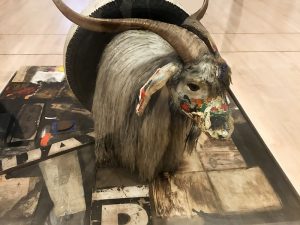
Image source: https://www.flickr.com/photos/rocor/38414055976/in/photostream/ Author: rocor
Neo-Dada was a movement of audio, visual and literary manifestations that had similarities in method or intent with earlier Dada artwork. It sought to close the gap between art and daily life, and was a combination of playfulness, iconoclasm, and appropriation. There was also an international dimension to the movement, particularly in Japan and in Europe, serving as the foundation of Fluxus, Pop Art and Nouveau réalisme.
What’s the Neo Dada?
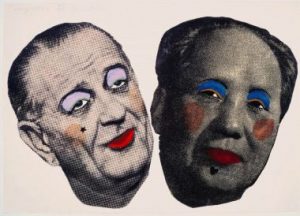
Image source: https://www.wikiart.org/en/jim-dine/drag-johnson-and-mao-1967 Author:Jim Dine
The term Neo-Dada was applied to the works of artists such as Jasper Johns, Robert Rauschenberg, and Allan Kaprow who initiated a radical shift in the focus of modern art during the 1950s. Neo-Dada artists are known for their usage of mass media and found objects, as well as a penchant for performance. These artists rebelled against the emotionally charged paintings of the Abstract Expressionists that dominated the art world in the 1950s. By introducing mundane subject and emphasizing performance, the Neo-Dada artists ushered in the radical changes modern art underwent during the 1960s and paved the way for Pop art, Minimalism, and Conceptualism.
How it originated
While many individual works and moments contributed to the definition of the Neo-Dada aesthetic, Cage’s “The Event,” or Theatre Piece No. 1 (1952), performed at Black Mountain College, summarized the movement’s interests in the emphasis on chance, individuality, interaction with the audience, and multiple media all combined into a singular work. After moving to New York City, Rauschenberg and Johns were neighbors and often discussed their ideas about artistic practice in their studios, further refining the aesthetic, particularly the idea that the artist’s intent should not be legible or present in the final work.
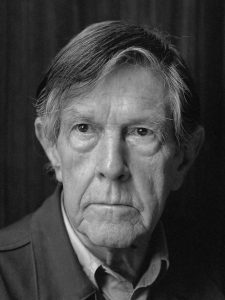
Image source: https://en.wikipedia.org/wiki/John_Cage
The label Neo-Dada was first used in 1957 by art critic Robert Rosenblum and then the following year by Thomas B. Hess, director of ARTnews magazine. The critic and art historian defined Neo-Dada as a broader movement in 1962, by which time the East Coast branch of the movement was largely considered to be over and Pop art began to captivate New York.
Consumer culture
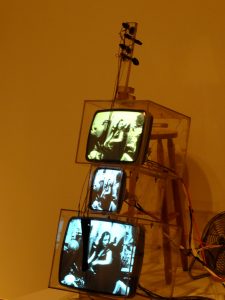
Image source: https://www.flickr.com/photos/11561957@N06/50026976476/ Author:B
Unlike the militant declarations of Dada artists, Neo-Dada artists provoked through covert strategies more suitable to the cold war climate. Neo-Dada simultaneously mocked and celebrated consumer culture, united opposing conventions of abstraction and realism, and disregarded boundaries between media through experimentation with assemblage, performance, and other hybrid fusions.
From the viewer perspective
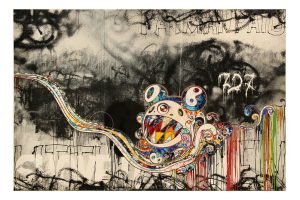
Image source: https://www.flickr.com/photos/129231073@N06/42558220430 Author:Fred Romero
Info sources: https://www.theartstory.org/movement/neo-dada/
